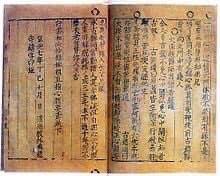A thread on the dangers being faced by a 15th century dargah in Delhi's Sheikh Sarai area.
A message from a local that this non ticketed monument is being used as a park for playing cricket, cards and general adda baazi took me there last week.
1/
A message from a local that this non ticketed monument is being used as a park for playing cricket, cards and general adda baazi took me there last week.
1/

In 2016 I had visited this dargah for my book The Forgotten Cities of Delhi and written:
"This dargah is by far the prettiest I have seen. It’s like a vermillion-mark of spirituality on the surrounding area. Though very small, it is exquisite and very well preserved."
Photo 2016
"This dargah is by far the prettiest I have seen. It’s like a vermillion-mark of spirituality on the surrounding area. Though very small, it is exquisite and very well preserved."
Photo 2016

Sheikh Yusuf Qattal was a disciple of Qazi Jalaluddin Lahori & came from Lahore to Delhi.
This tomb with attached mosque was built by
Hazrat Sheikh Alauddin, the grandson of Baba Farid Ganj e Shakkar for Sheikh Yusuf Qattal in the reign of Sultan Sikander Lodi in 1497 AD.
This tomb with attached mosque was built by
Hazrat Sheikh Alauddin, the grandson of Baba Farid Ganj e Shakkar for Sheikh Yusuf Qattal in the reign of Sultan Sikander Lodi in 1497 AD.

It has a small dome, measuring 18 feet 2 square inches, supported by twelve pillars, which are filled in between by pierced exquisite stone screens with geometric designs while the pavilion and lattice screens are of red sandstone with a lime mortar dome. 



A small unused mosque stands closeby. It is in a shabby condition. Being made worse as it's a non ticketed space for use by locals as they deem fit 







There are ruins of a building at the entrance, which may have been a khanqah or madarsa. It must have been very elegant and attractive when it was built. 





The cricket balls have already claimed one screen as a victim.
If we don't wake up and spread awareness or take care it won't be long before this so far well preserved tomb becomes a ruin.

If we don't wake up and spread awareness or take care it won't be long before this so far well preserved tomb becomes a ruin.


My job as a chronicler of Delhi's monuments which I have recorded for posterity in #delhitrilogy published by @HarperCollinsIN is to create awareness about what we stand to lose
The elderly locals revere him as Dada Pir & make offerings on Thurs.
We have to sensitise youngsters


The elderly locals revere him as Dada Pir & make offerings on Thurs.
We have to sensitise youngsters



• • •
Missing some Tweet in this thread? You can try to
force a refresh






























